This is from a surgical operating table. I believe this resistor is bad. Im not 100% sure. I test it and it gives me no reading at all, no resistance reading nor contuinity reading.

Edit* Added a picture of the underside.
This is from a surgical operating table. I believe this resistor is bad. Im not 100% sure. I test it and it gives me no reading at all, no resistance reading nor contuinity reading.

Edit* Added a picture of the underside.
To sum up:
It's a power resistor. If you measure the body size and length you could likely find out what wattage it was.
It has a color band, and likely had more before the heat burned them away.
You are unlikely to ever measure continuity through a resistor. It's the opposite of what a continuity test measures. The open circuit and no resistance tells you that it's damaged though.
Find out what it connects to and what voltage may be across it would go a long way into guesstimating the resistance and confirming the wattage.
Since you said 26V power input, and as a resistor on the coil for the relay, the real question is what is the model of the relay. This will tell you the intended coil voltage and amperage, which you can then use to figure out the resistor value. It's basically a voltage divider. Or if it's on the switched pins of the relay, trace it out.
The other options are to contact the manufacturer, Google search for pictures of the circuit board hopefully with the resistor color bands in view, or ask someone to take pictures or measure the resistor in a good model.